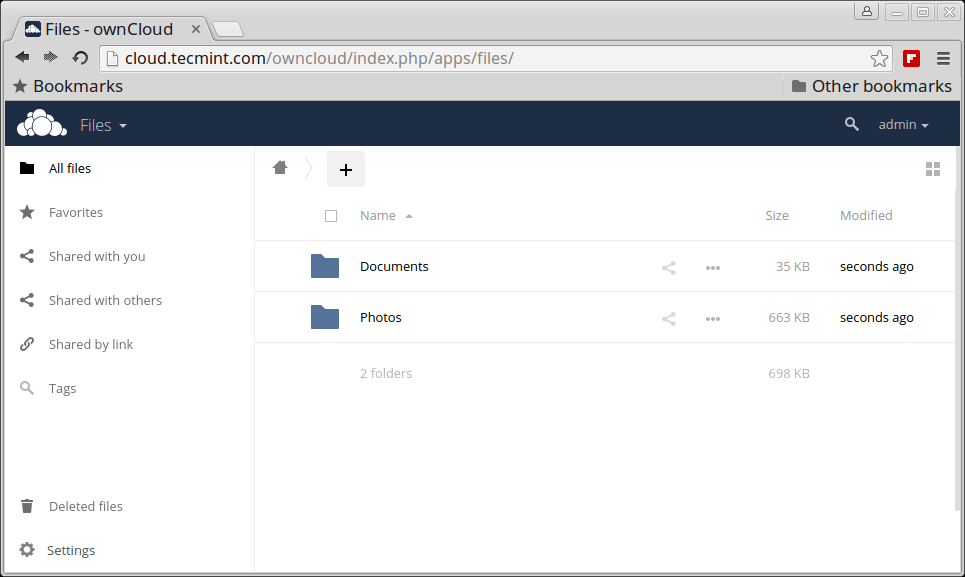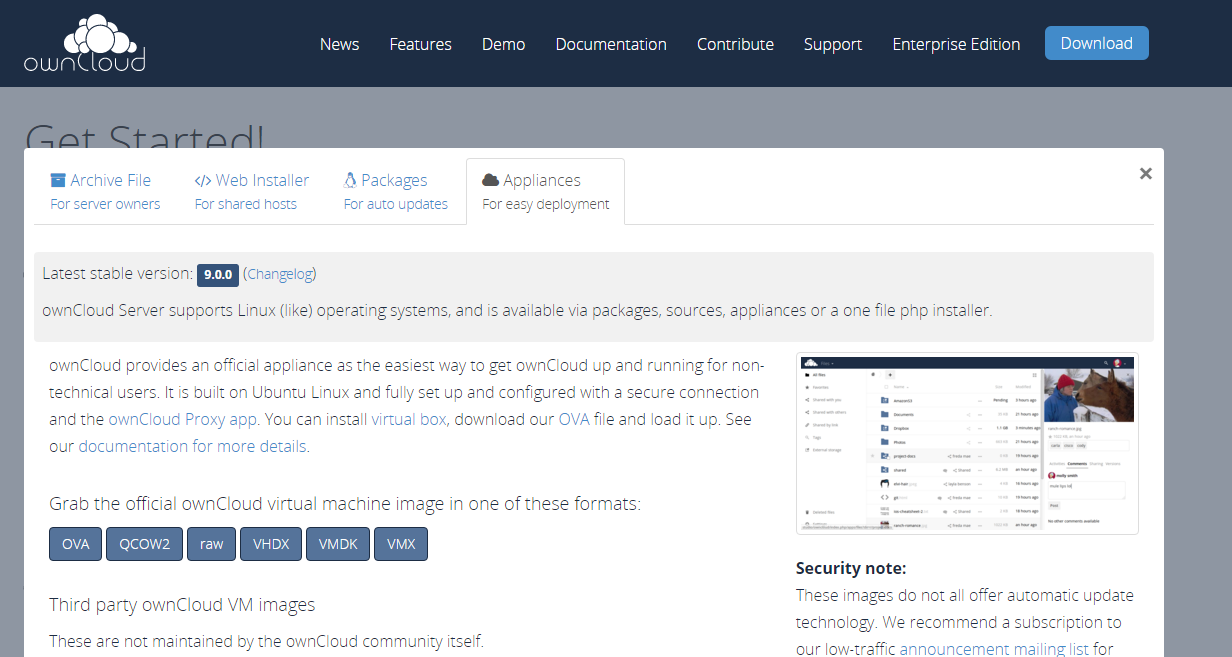

See the Apache page or Nginx page for details on configuring TLS/SSL for your web server. You can also refer to the excellent upstream documentation.
#Owncloud password
It is also a good idea to set a password for the postgres user within PostgreSQL, which you can do with \password postgres from the PostgreSQL prompt.įor more details on PostgreSQL deployment and configuration on Fedora, see PostgreSQL. GRANT ALL PRIVILEGES ON DATABASE owncloud TO username Now you will need to create a database and user for ownCloud to use.ĬREATE USER username WITH PASSWORD 'password' ĬREATE DATABASE owncloud TEMPLATE template0 ENCODING 'UNICODE' ĪLTER DATABASE owncloud OWNER TO username More information on this file can be found in the PostgreSQL documentation. The line for the 'local' TYPE does not apply to ownCloud, as it does not use local socket access to PostgreSQL servers. To do this, edit /var/lib/pgsql/data/pg_hba.conf and change the mechanism from 'ident' to 'password' on the lines that configure TCP/IP connections from localhost, 127.0.0.1, and ::0. # setsebool -P httpd_can_network_connect_db onĪnd configure PostgreSQL to use password authentication for local TCP/IP connections. You will also need to configure SELinux to allow the web server to connect to the PostgreSQL server via TCP/IP: If you use PostgreSQL, you will need to initialize the server before enabling and starting it. Set the username as you like (but 'owncloud' is always a safe choice.), and choose a strong password (it will be saved in your ownCloud configuration, so there's no need to worry about convenience in re-typing or remembering it).įor more information on MariaDB / MySQL deployment and configuration on Fedora, see MariaDB. GRANT ALL PRIVILEGES ON owncloud.* TO IDENTIFIED BY 'password' You should then create a database and a user for ownCloud to use.

It is then strongly recommended to secure the server configuration. If you use MariaDB / MySQL, you will need to enable and start the database server. However, please be aware that SQLite is not a good choice for even moderately-sized or public deployments, and should really only be used for small private deployments or testing. If you choose to use SQLite, no special configuration is required. See the Apache page or Nginx page for more detailed instructions on installing and configuring of web server.Įnabling, starting and configuring the database server You will need to enable and start the web server. If you wish to run ownCloud on Apache and use a MariaDB / MySQL database.
#Owncloud install
# dnf install owncloud-httpd owncloud-mysql You most likely want to install one of owncloud-httpd or owncloud-nginx, depending on the web server you wish to use, and at least one of owncloud-mysql, owncloud-postgresql and owncloud-sqlite depending on the database you wish to use.


 0 kommentar(er)
0 kommentar(er)
